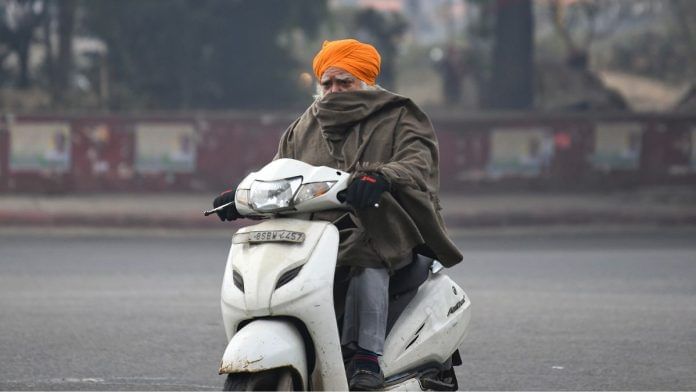New Delhi: Delhi has experienced the least warming during winters in the past 50 years while Manipur has seen the most, a study by the US-based climate science non-profit Climate Central has found.
Released on 18 March, the study titled ‘Winter Temperature Trends Across India’ tracked average temperatures in India across seasons from 1970 to 2023. It looked at all three winter months — December, January, and February — and found that every region has experienced varying degrees of warming in the winters over time.
These findings come at a time when rising global temperatures due to climate change have been a cause for much concern. Signatories to the Paris Agreement on Climate Change, signed in 2015, agreed to limit the rise in global temperatures to well below 2 degrees Celsius above the pre-industrial level — preferably to 1.5 degrees — to limit the disastrous impact of climate change.
According to the study, along with Manipur, states like Sikkim saw winter temperatures rise the most — 2.3 degrees since 1970. In contrast, Delhi (0.2 degrees Celsius rise in December, 0.8 degrees in January) had the lowest warming rates.
The non-profit also flags another disturbing trend in its study — the warming of February temperatures over the years, potentially indicating a slow disappearance of spring.
Raghu Murtugudde, a climate studies professor at the Indian Institute of Technology (IIT), Bombay, lists potential reasons for the lack of warming during winters in Delhi.
“The warming of the Arabian Sea has changed wind circulation patterns in India. While some places like Mumbai have seen cooler winter temperatures because of this, it could also be responsible for the reduced winter warming in places like Delhi,” he said.
Another reason, according to him, is Delhi’s pollution. Air pollution typically restricts the sun’s beams from reaching the ground, thus leading to colder weather, Murtugudde said.
“It’s possible that Delhi’s winter pollution is the reason it hasn’t experienced warming during winters,” he said.
Also Read: Climate change deadlier than cancer, widening gap between haves, have-nots, says new UN study
‘Disappearing’ spring
The study used daily average temperatures from the ERA5 database, developed by the European Centre for Medium-Range Weather Forecasts (ECMWF), which used meteorological data from weather stations, satellites, and weather balloons to give information about daily weather patterns.
The analysis didn’t look at the difference between India’s temperatures in January 1970 and December 2023. Instead, it considered the long-term average temperature and how it changed over time.
According to NASA, global temperatures have risen by at least 1.1 degrees Celsius since 1880, while 2023 was declared as the hottest year on record. Climate Central’s study on Indian winters aims to “place India in the context of these global trends”.
The study found that northern regions such as Ladakh saw minimal warming of 0.1 degrees Celsius while Uttar Pradesh, like Delhi, experienced a reduction of 0.8 degrees in its temperatures.
The study found that despite the variance in warming during the early winter months, in February all states experienced warming over the years, with some even seeing exceptionally high temperatures.
For instance, Jammu and Kashmir warmed by 3 degrees Celsius in February — the largest recorded change for that month. Meanwhile, nine other states, including Rajasthan, Delhi, Haryana, Uttar Pradesh, and Himachal Pradesh, saw a temperature increase of at least 2 degrees in February compared to January and December.
According to the study, this sudden warming in northern states in February as opposed to the limited warming in the months prior means that the spring season is fast disappearing from northern India.
“These regions now have the potential for abrupt transitions from cool winter-like temperatures to the much warmer conditions that traditionally occurred in March,” the study says, adding: “This supports the reports that it feels like spring has disappeared in many parts of India”.
Climate Central also found that winter was the fastest warming season for 12 of the 34 states and Union territories they analysed.
(Edited by Uttara Ramaswamy)
Also Read: Climate change is transforming the way we speak. And that’s a good thing



